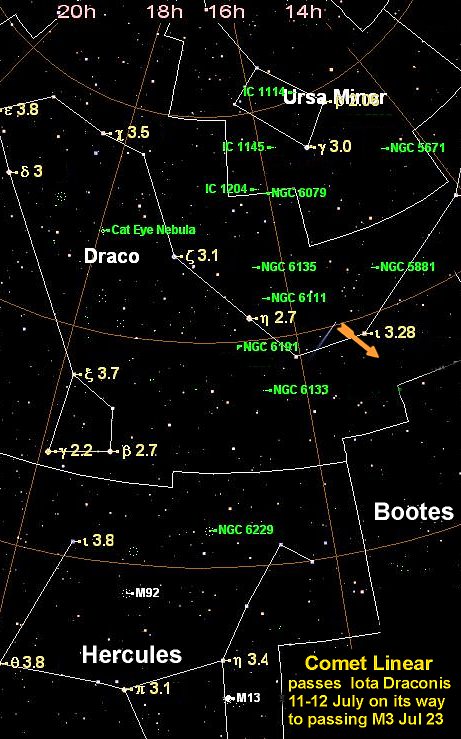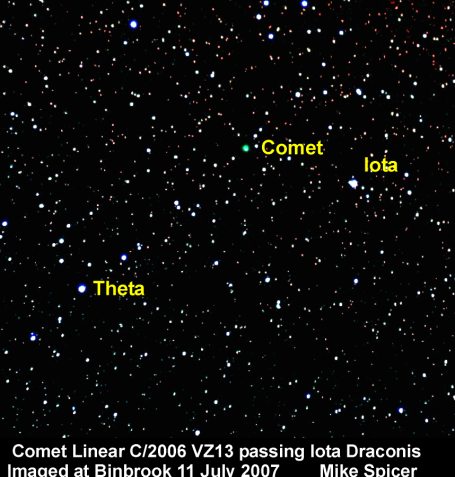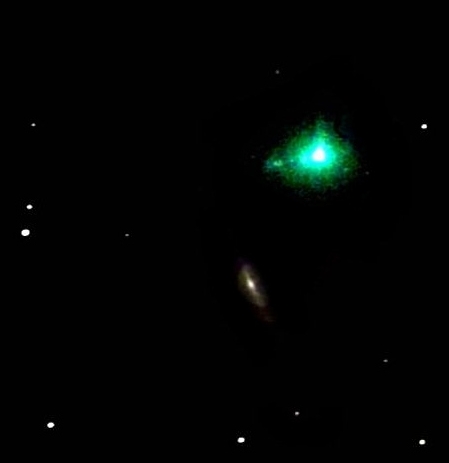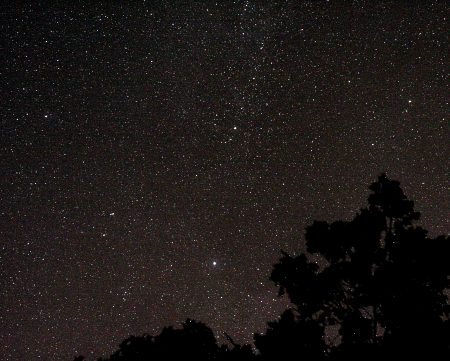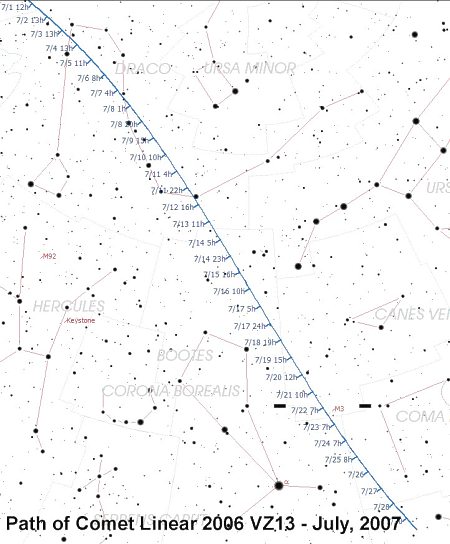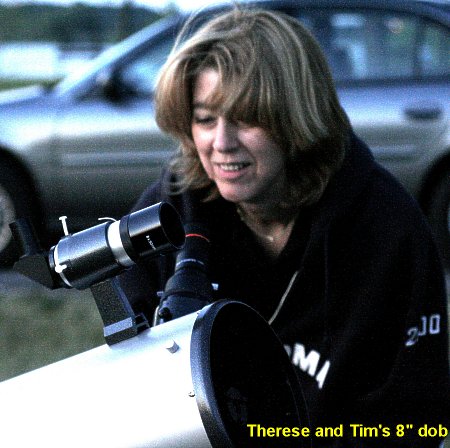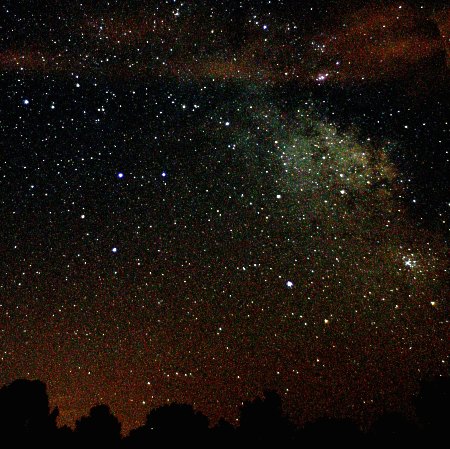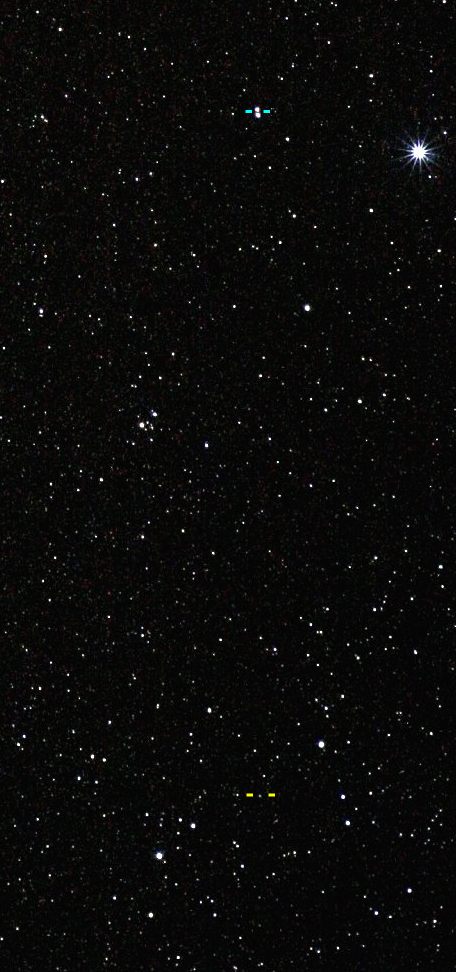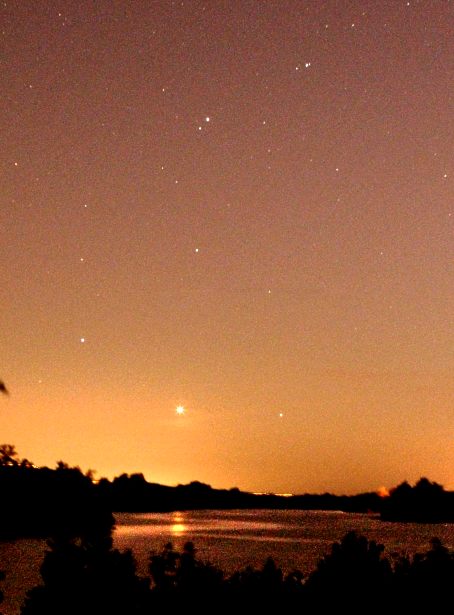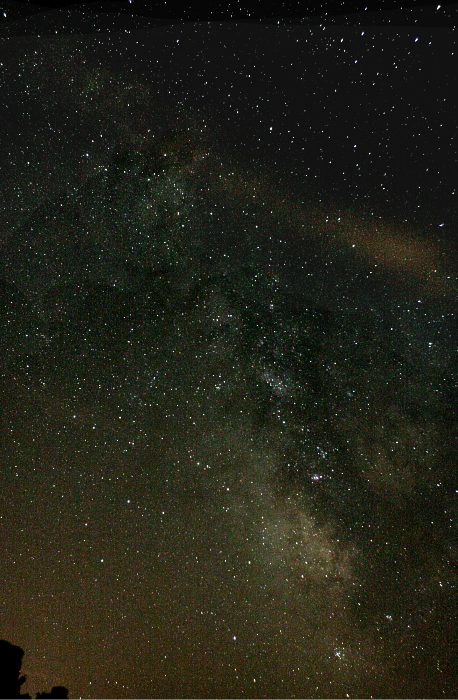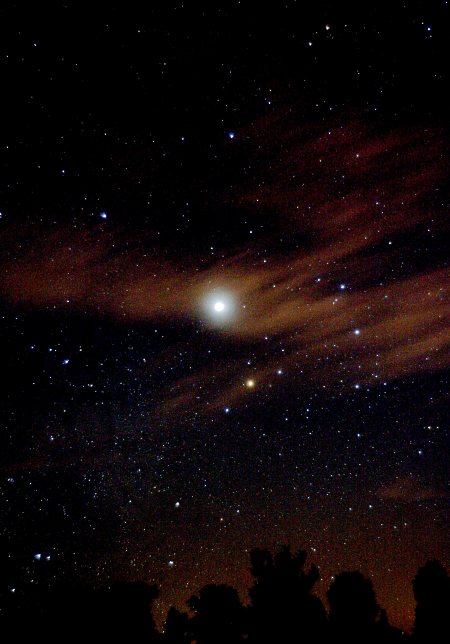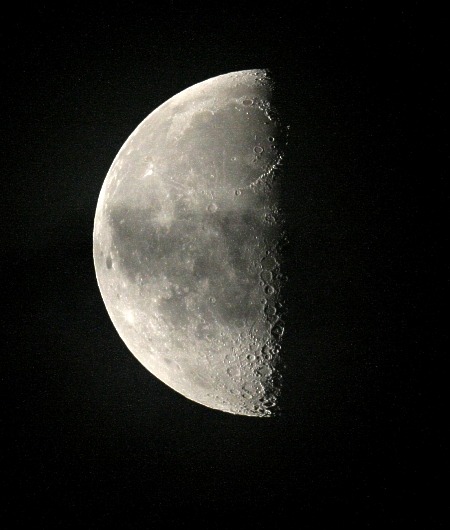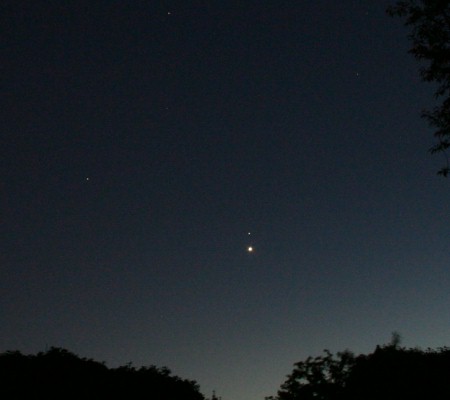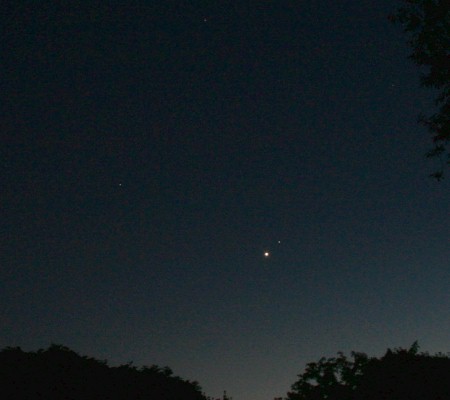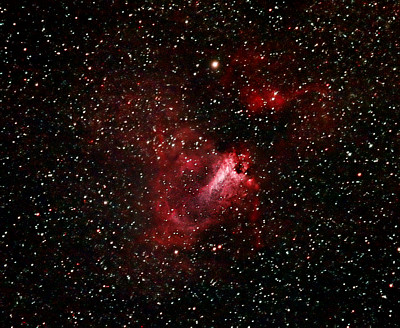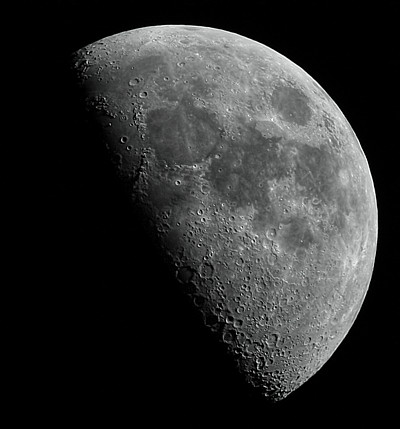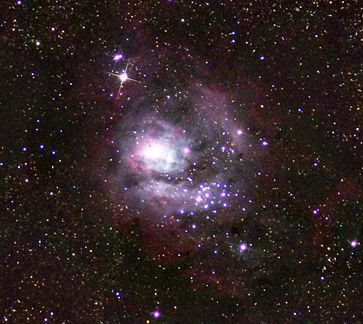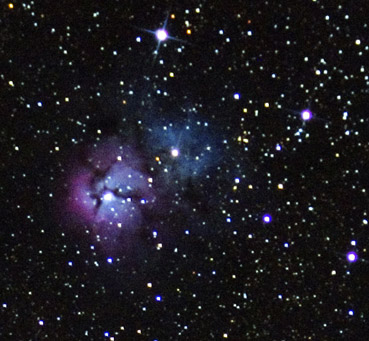PERFECT WEATHER FOR 07-07-07 AT BINBROOK
“… and gentlemen in England now abed, will think themselves accursed they were not here…” runs the great speech from Henry V. We happy few who were out at Binbrook had a spectacular treat: perfect weather, very few bugs, sputtering meteors, several bright planets and a wonderful southern sky with a brilliant milky way… and no clouds.
I opened the park at sunset and was set up, ready to observe with the 80mm apo on a TAL mount or image with the digital rebel, by 9:15 pm. Jackie did her alignment thing and started to observe the shadow transit of Ganymede by 9:25. Tim Philp and his friend Therese pulled in a minute later with his 8″ dob ready to go in a trice; Steve’s VW climbed the hill and disgorged a full binocular observing station, several green lasers and a Meade motor-driven reflector. A time-exposure can make darkness seem like daylight:
Dusk brought out Venus, then Jupiter, then Saturn as the sky darkened. Most were steadily watching the shadow of Ganymede complete its transit (seemed to be about 10 minutes faster than Starry Night showed it), with the 4 Jovian moons clustered to one side of the planet. For Jackie, who missed last night’s shadow transit of Europa, Ganymede’s shadow was both exiting to watch and a rare event.
Once the sky became dark, imaging started in earnest, with focus on Scorpius and Sagittarius. Tim and Therese toured several Messier objects with the push-pull scope, falling behind Jackie and Steve’s tally using the go-to and her wonderful little apo. The sky was clear though the seeing was only fair. Therese learned to identify the Teapot, here’s a much-reduced image:
To really appreciate how the Milky Way looked, you’d have to turn your gaze higher to see it spreading up from the Teapot, through Scutum and Aquila… like this:
I was more satisfied with the Nikon 50mm F/1.8 lens I used tonight, than with last night’s Soligor lens. Star images showed no coma in the larger-sized image which I will post on my astro-gallery.
If you looked way up, the Milky Way ran right through Cygnus and showed a little colour overhead (a rarity for the Hamilton area). Tim took his friend on a tour of M57 and several globular clusters through the Milky Way, using a green laser as his finder (and it worked like a charm). I took just a small piece of the overhead sky shots, to show how beautiful Lyra looked. M57 is visible (between the yellow dashes), and Epsilon Lyrae is well separated (between the blue dashes):
Tim and Therese left at midnight but Jackie, Steve and I stayed for quite a while longer – several meteors including one at least mag minus 3 that swept slowly from the NE into Aquila, sputtering as it went. We listened for a sonic boom, but I didn’t hear anything as loud as when the raccoon fell into a garbage bin (apparently they can’t get out).
As the last quarter Moon rose over the lake, Steve and I imaged it and Jackie looked through a 5″ scope and a set of big binoculars (she loves that terminator). The temperature had fallen below 20 degrees when we finally packed up about 1:30 am.
A great night and to our friends who didn’t come out, take advantage of what comes by! November is only 110 days away and you’ll look back fondly on warm, clear summer nights!
